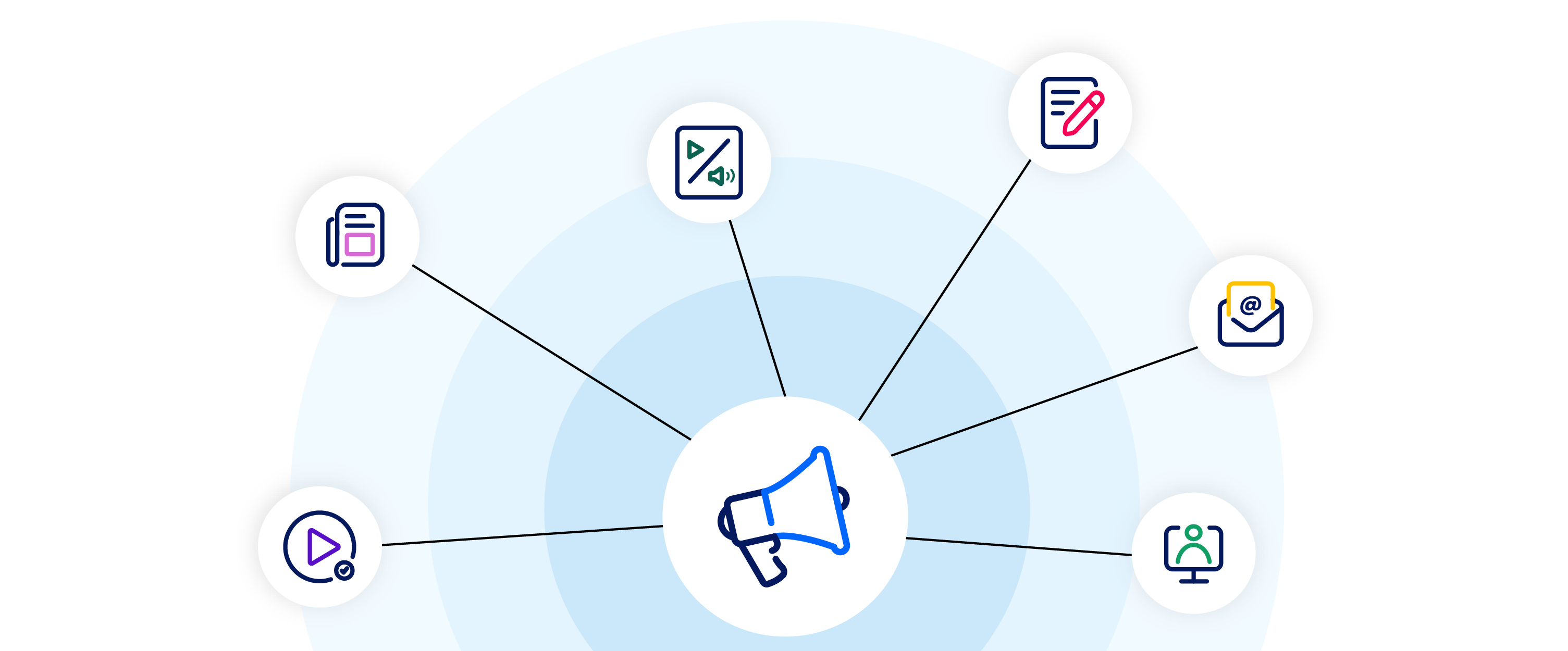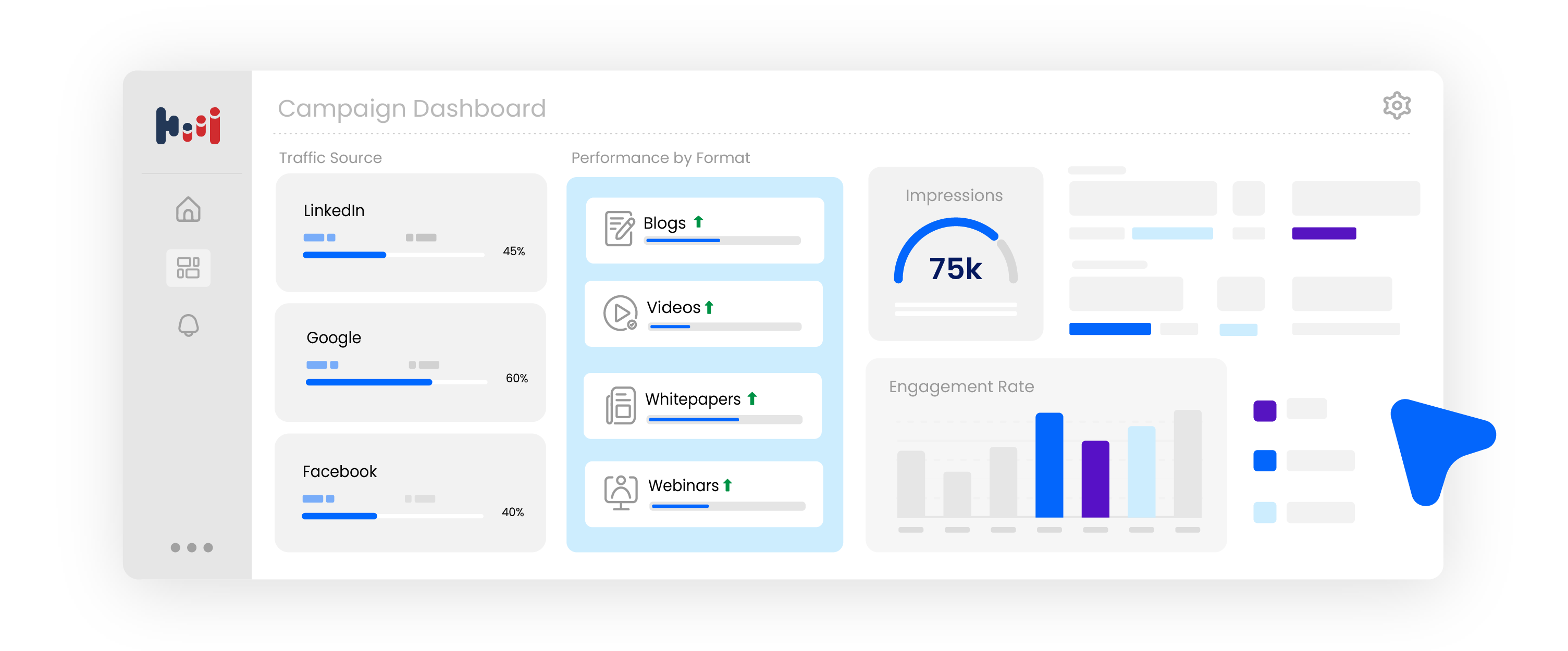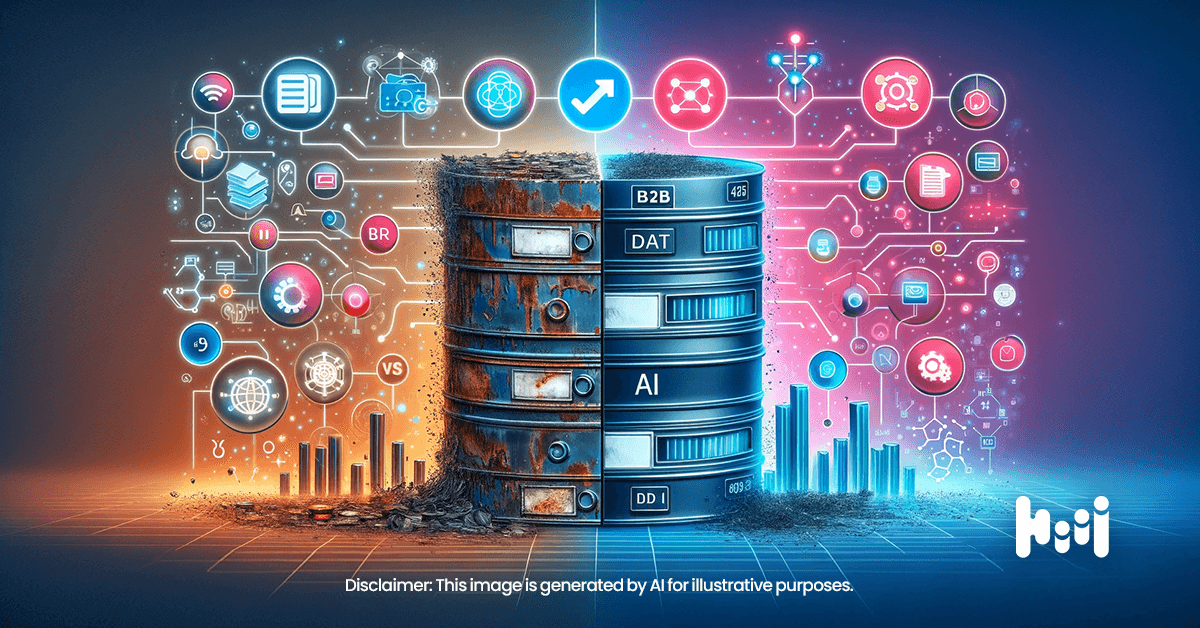Rethinking Content Distribution: Why a Multichannel Strategy Drives Better Results
May 2, 2025

Creating content is just the beginning, no longer the hard part. B2B teams are producing more assets than ever; blogs, ebooks, webinars, social posts, but most of it isn’t driving results. The problem isn’t the content. It’s the distribution.
Let’s face it, B2B content distribution is the real battlefield; where the real challenge, and opportunity, lies. Without it, even the best content is like a billboard in the desert: visible to no one and impactful to no one.
In an oversaturated digital landscape, where every prospect is bombarded with information, content that isn’t seen, engaged with, or acted upon might as well not exist at all. And yet, far too many B2B marketers are still relying on sporadic, siloed, or single-channel distribution efforts, hoping good content alone will carry the weight.
The numbers tell the story: while 90% of B2B marketers are using content marketing, only 42% say it’s effective. Why? Because disconnected distribution kills performance. Without a clear, multi-channel strategy, content fails to reach the right people, at the right time, on the right platforms, leading to:




What Ineffective Distribution Looks Like in Practice
You don’t need analytics to know something’s wrong, you can feel it:
- Leads are drying up. Engagement is slipping.
- Content performance is inconsistent. Some assets work, others vanish without impact.
- Your ROI is flatlining. Even with more content and bigger budgets.
This happens when content is published in isolation, shared on a blog but not repurposed, sent in an email but not followed up on, posted on social but not targeted by paid promotion.
When B2B content distribution lacks coordination and consistency, your audience notices, and they tune out.
Without a clear plan or cross-channel coordination, every asset underperforms, even if the content is high-quality. If you’re experiencing these symptoms, your content isn’t failing; your distribution strategy is.
Why Multi-Channel Distribution Wins
Multi-channel content distribution isn’t about being everywhere. It’s about being strategically present where your audience already is, and guiding them through a journey that feels natural and valuable.
Why it works
- Buyers are constantly switching platforms, from email to social to search. A single-channel approach can’t keep up.
- A coordinated multi-channel strategy mirrors real buyer behavior, meeting them where they are with the right message at the right time.
- Every channel should play a distinct but connected role, working in harmony to drive awareness, interest, and conversion.
That’s where a multi-channel distribution approach comes in. It ensures your content doesn’t just exist, it gets discovered, engaged with, and acted upon. This means delivering content that’s purpose-built for each channel: snackable insights on LinkedIn, targeted email nurtures, sponsored content through syndication partners, and high-value assets promoted via retargeting ads, all working together to move prospects forward.
Imagine a prospective buyer discovering your brand through a top-of-funnel blog on their LinkedIn feed, then receiving a targeted email with a gated whitepaper based on their industry, followed by a case study promoted through a display ad while they’re reading relevant news. That’s not just content distribution, it’s multi-channel orchestration designed for impact.
And with B2B sales cycles being long and non-linear, timing and relevance are everything. Distributing the right content, to the right person, on the right channel, at the right time is what transforms content into pipeline.
Ultimately, effective B2B content distribution is a balance of reach, relevance, and rhythm, ensuring you stay visible without oversaturating, and that every channel plays a distinct but connected role in guiding your prospects toward conversion.

How to Get Your Content Seen, and Consumed
You’re already investing in content. But if your audience isn’t seeing it, engaging with it, or taking action, something’s broken in your distribution.
The good news? Fixing it doesn’t mean starting over. It means being smarter about how, where, and when you show up. Multi-channel distribution isn’t about doing more; it’s about doing it right, so that every piece of content pulls its weight across the buyer journey.
Here’s how to ensure your content doesn’t just get published. It gets discovered, engaged with, and turned into pipeline. A tactical playbook for executing an effective multi-channel content strategy, powered by data and built for action.
Build and Implement a Content Calendar
In content marketing, a content calendar is your bible. Without one, timing, consistency, and alignment quickly fall apart. A well-structured calendar not only helps you plan when and where each piece of content goes live, it ensures that everything supports broader business initiatives and campaign goals.
But beyond timing, a strong content calendar should also help you map the customer journey through your content. By plotting how each asset connects, from top-of-funnel awareness to deeper consideration, you can guide your audience across touchpoints in a purposeful way.
Let’s say you’re planning a product launch. Coordinating a LinkedIn teaser, a blog post on the problem your product solves, a gated case study for email nurture, and a follow-up demo invite creates a guided path, not just a series of disconnected messages. Your calendar becomes more than a schedule, it becomes a journey planner that aligns content with buyer intent at every stage.
Use Data to Identify the Right Channels
Don’t spray and pray. Use B2B intent data and engagement metrics to focus efforts on channels that yield the highest returns. Guesswork is expensive and inefficient. The smarter path is to let B2B intent data and engagement insights show you exactly where your audience is paying attention, and where your content will actually make an impact.
If your target decision-makers are CTOs who live on LinkedIn but rarely check Twitter, your budget shouldn’t be split evenly between the two. If mid-funnel prospects in healthcare respond better to email than display ads, lean into that behavior and double down on what works.
And this isn’t just about channel preferences, it’s about matching the message to the medium. A buyer who’s casually browsing LinkedIn during lunch isn’t in the same mindset as someone opening a tailored email in their work inbox. Understanding where your audience is, and what they’re doing when they’re there, is how you build relevance, not just reach.
With tools like DemandScience’s data ecosystem, you can go even deeper: segmenting your audience by firmographics, buying stage, content preferences, and intent signals. That means you’re not just choosing the right channels, you’re choosing the right channels for the right people, at the right time.
Build a Cross-Channel, Repurposable Strategy
Creating content from scratch for every channel isn’t scalable, and it doesn’t have to be. A more effective approach is to start with a cornerstone asset, like a whitepaper, blog post, or case study, and repurpose it into multiple formats tailored for different channels.
For example, a blog post on industry trends can become a LinkedIn infographic, spark a podcast discussion, evolve into a webinar topic, or be broken down into snippets for email nurture and social posts. This kind of strategic repurposing ensures that each asset reinforces the others, creating consistent, connected experiences across the buyer journey.
There’s also a powerful SEO advantage: publishing a cluster of related content around one topic strengthens your website’s authority in Google’s eyes. When you own both primary and long-tail keywords across formats, you boost your credibility and improve rankings, driving more organic traffic over time.
In short, a single idea, repurposed intentionally, becomes a multi-channel engine for visibility, engagement, and discoverability. The result? Cohesive storytelling and surround-sound impact.
READ: What Can You Do with Old Blog Content? Guide to Repurpose Old Content
Collaborate with Sales to Extend Reach
Sales teams are often underutilized for content distribution. By equipping sales with marketing assets, such as whitepapers or case studies, you increase content visibility and credibility. Sales can distribute this content directly to prospects, aligning with the marketing team’s efforts and helping drive engagement further down the funnel.
If your marketing team creates a detailed industry report, sales teams can share it with prospects, demonstrating the value your company provides. This not only strengthens your brand’s credibility but also enhances engagement.
Marketing builds the content, sales delivers it in moments that matter. It’s a win-win.
Personalize by Channel and Buyer Stage
Not all content fits every platform, or every point in the buyer journey. Adapt your messaging accordingly. To truly connect, your content needs to be shaped by data, context, and channel, and adapted to where each buyer is in their journey.
B2B data gives you the tools to segment audiences by title, industry, behavior, and intent, allowing you to craft content experiences that feel like they were made just for them. But personalization doesn’t stop at who you’re targeting, it extends to how and where you reach them.
Not all content fits every platform, or every stage of the buyer journey.
- A short-form thought leadership post on LinkedIn works well for early-stage awareness.
- In-depth reports and whitepapers sent via email make sense for mid-funnel engagement.
- Targeted case studies, ROI calculators, or demo videos are more effective at the decision stage, especially for ABM efforts.
When your messaging is tailored to both the platform and the buyer’s readiness to act, it doesn’t just get seen, it resonates. That’s how you turn content from passive collateral into active influence. In short: personalization isn’t just about swapping out a job title in your subject line, it’s about orchestrating relevance across every touchpoint.
Fuel Agile Distribution with Real-Time Signals
Don’t wait until the campaign ends to find out what went wrong. Real-time data is your agility engine, allowing you to make smart adjustments mid-campaign instead of post-mortems after the fact.
Imagine investing heavily in a content campaign, only to realize weeks later that it didn’t land. By then, the budget’s gone, and so is the window of opportunity. But with real-time performance insights, you can see what’s working, spot what’s not, and pivot quickly, before results stall.
If a whitepaper isn’t gaining traction via email, promote it through LinkedIn or repackage it as a blog post. If a high-intent segment isn’t engaging with long-form content, try short-form video, carousel ads, or quick-hit insights that match their preferred format.
This isn’t just about being reactive, it’s about building a flexible distribution strategy that listens to audience signals and adapts on the fly. Whether it’s shifting budget between channels, updating messaging for different personas, or swapping formats based on engagement data, agility turns content from static assets into dynamic performers.
Multi-channel success depends on responsiveness. Real-time optimization ensures your content stays relevant, your budget stays efficient, and your ROI stays strong.
RELATED: Mastering Campaign Measurement: A Guide for B2B Marketers
B2B Content Syndication: A Key Multi-Channel Lever
The only content that breaks through is targeted, relevant, and delivered at exactly the right time. This is where content syndication becomes a critical lever in your multi-channel strategy, not just a one-time awareness tactic. When powered by data and precision, syndication becomes one of the most scalable, effective ways to get your content in front of the decision-makers who matter most.
Instead of relying solely on owned or organic channels, syndication allows you to:
- Extend reach across high-performing, trusted platforms
- Deliver content to high-intent accounts based on actual behavior and signals
- Support every stage of the funnel, from awareness to re-engagement
With data-powered syndication, you’re not just casting a wide net, you’re aiming with intent. It ensures that your whitepapers, guides, and case studies don’t just get downloaded, but get discovered by buyers already in-market for your solution.

DemandScience’s content syndication service takes this even further. By leveraging our proprietary B2B data ecosystem, we distribute your assets strategically, placing them in front of high-intent decision-makers across the right industries and job titles. Whether you’re targeting new audiences or extending ABM efforts, we help transform content from static resources into active revenue drivers.
This level of precision doesn’t happen by accident, it requires discipline, orchestration, and the right data. With strategic syndication as part of your multi-channel mix, each asset contributes to a broader journey. Every touchpoint amplifies the next, guiding buyers from awareness to action.
Remember, consistent and intelligent distribution is how you rise above the noise.
Conclusion: Orchestrate, Don’t Just Distribute
Producing great content isn’t enough. And distributing it everywhere isn’t the goal either. The future of content marketing and B2B content distribution belongs to those who orchestrate distribution with intention, data, and rhythm. Multi-channel success isn’t about doing more. It’s about doing it smarter.
Being present where it matters most, aligning messages across channels and stages, and using data to guide, adapt, and improve continuously.
Without a unified, multi-channel strategy, even the best content gets lost in the noise. But when every channel, message, and moment work in harmony, your content doesn’t just get seen, it converts.
Are you ready to go multi-channel?










